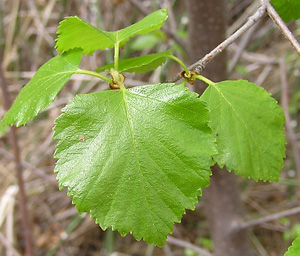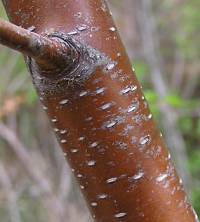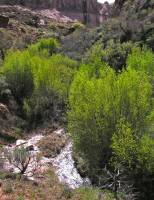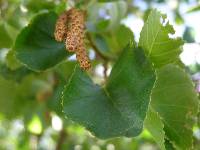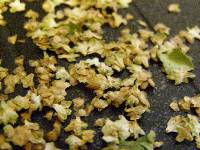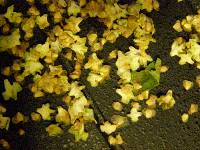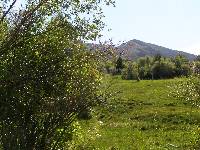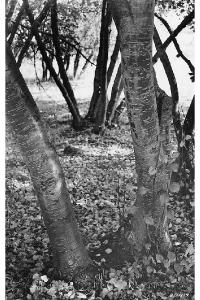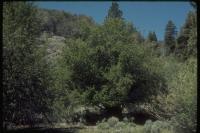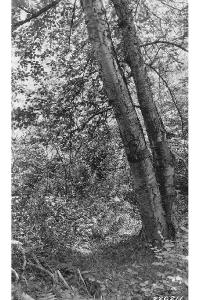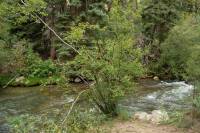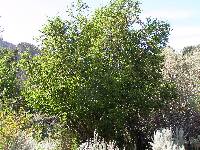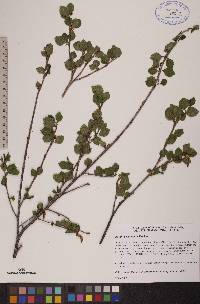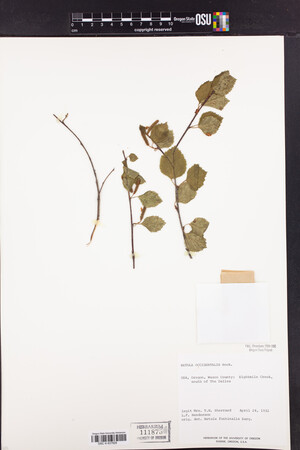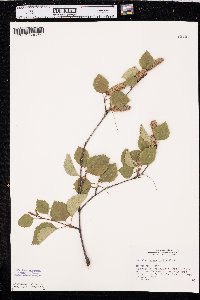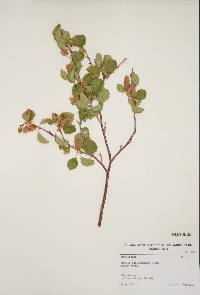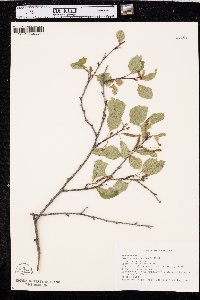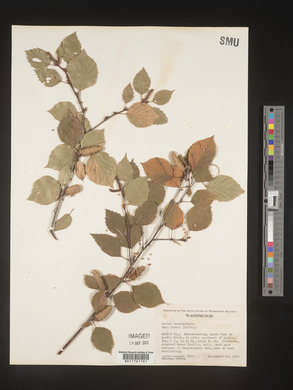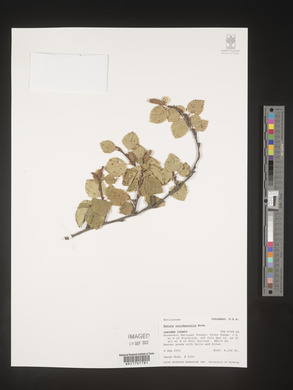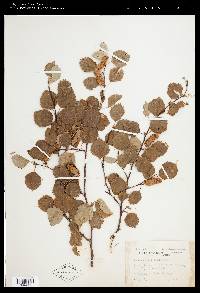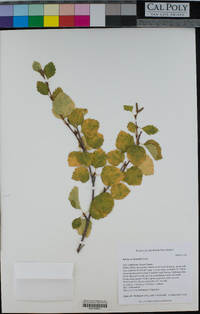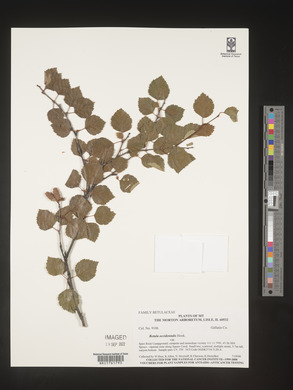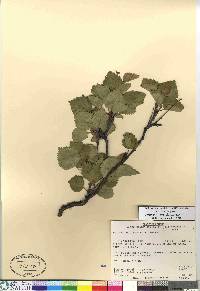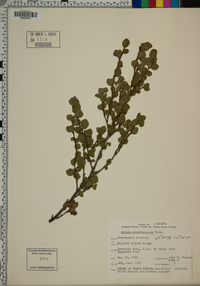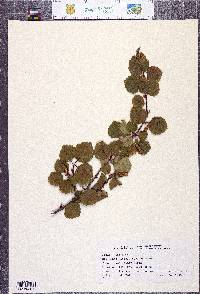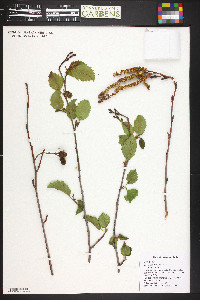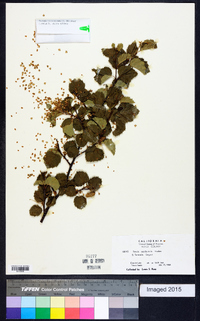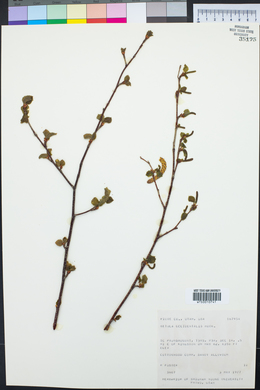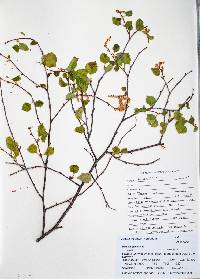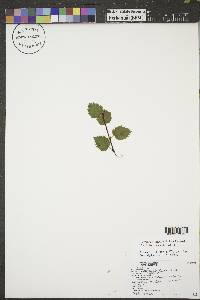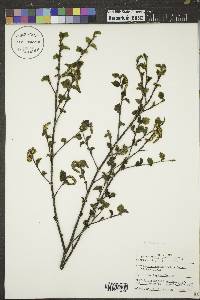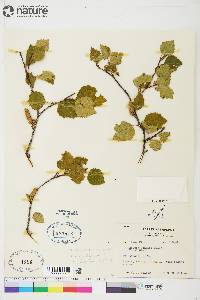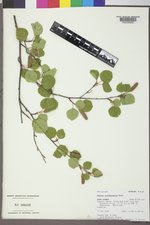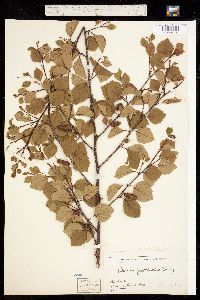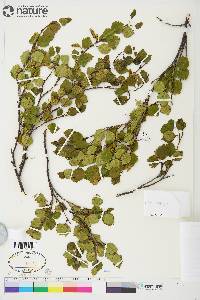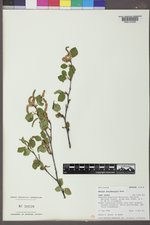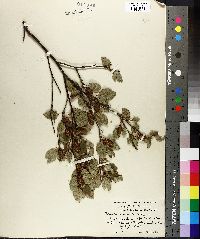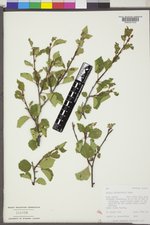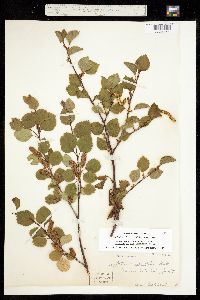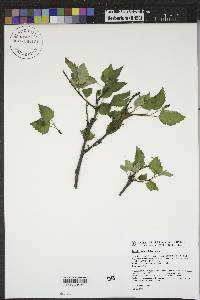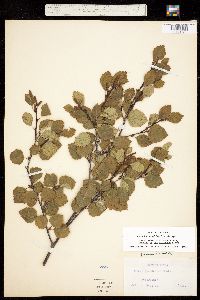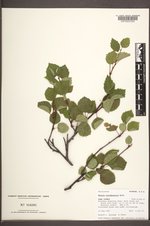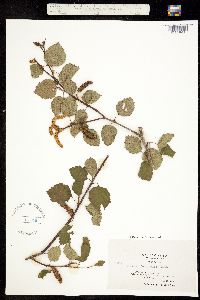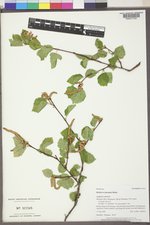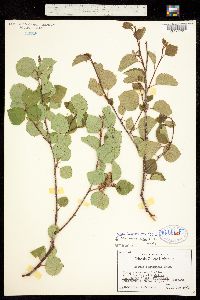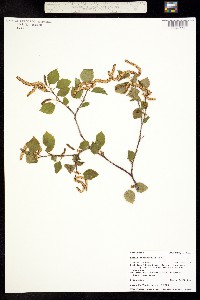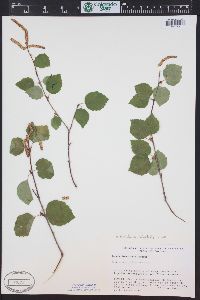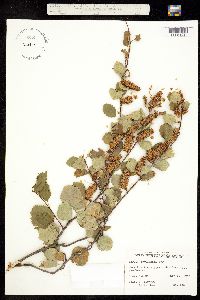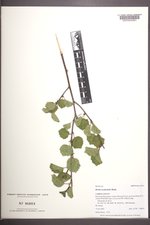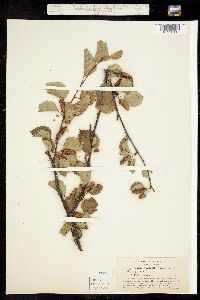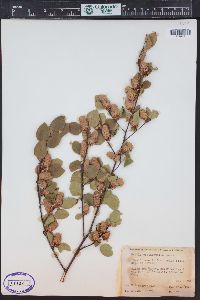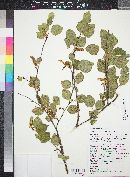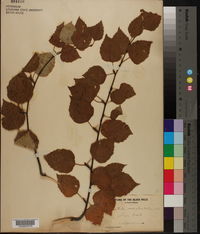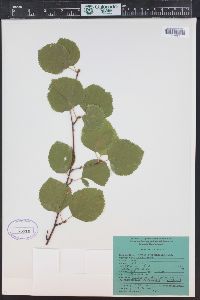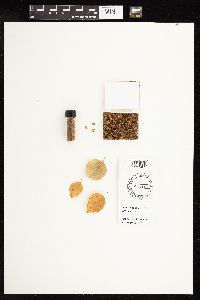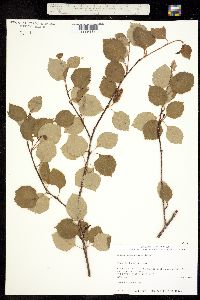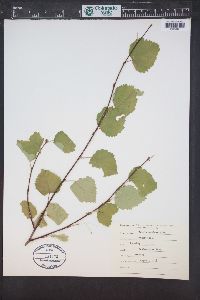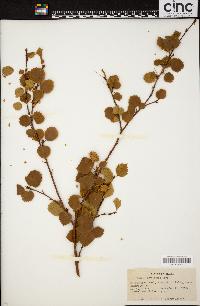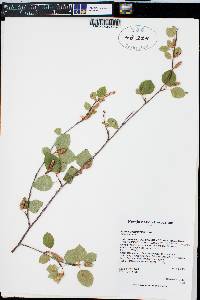
|
|
|
|
Family: Betulaceae
Water Birch
[Betula beeniana A. Nels., moreBetula elrodiana , Betula fontinalis Sarg., Betula obovata , Betula occidentalis var. inopina (Jepson) C.L. Hitchc., Betula papyrifera subsp. occidentalis (Hook.) Hultén, Betula papyrifera var. occidentalis (Hook.) Sarg.] |
Shrubs , spreading, to 10 m. Bark dark reddish brown to bronze, smooth, close, not readily exfoliating; lenticels pale, horizontally expanded. Twigs without the odor or taste of wintergreen, glabrous to sparsely pubescent, covered with conspicuous, reddish, resinous glands. Leaf blade broadly ovate to rhombic-ovate with 2--6 pairs of lateral veins, 2--5.8 × 1--4.5 cm, base truncate to rounded or cuneate, margins sharply and coarsely serrate or irregularly doubly serrate, teeth mostly long and sharp, basal portion untoothed, apex acute to occasionally short-acuminate; surfaces abaxially sparsely to moderately pubescent, covered with minute, resinous glands. Infructescences erect to nearly pendulous, cylindric, 2--3(--3.9) × 0.8--1.5 cm, shattering with fruits in fall; scales glabrous, ciliate, lobes diverging at middle, central lobe narrower and longer than ascending lateral lobes. Samaras with wings broader than body, broadest near summit, extended beyond body apically. 2 n = 28. Flowering late spring. Montane stream banks, slopes, and ridges, also in moist open woods, at edges of marshes, along lakeshores, and in wet swales; 100--3000 m; Alta., B.C., Man., N.W.T., Ont., Sask., Yukon; Alaska, Ariz., Calif., Colo., Idaho, Mont., Nebr., Nev., N.Mex., N.Dak., Oreg., S.Dak., Utah, Wash., Wyo. Betula occidentalis is a common, streamside, shrubby birch throughout much of the Rocky Mountains, extending eastward to northwestern Ontario. It has been widely known by the later name B . fontinalis because of questions concerning the legitimacy of Hooker's epithet (J. R. Dugle 1966). Recent changes to the International Code of Botanical Nomenclature (W. Greuter et al. 1994) have clarified the situation, however, and the consensus now is that the earlier name is correct. E. Hultén (1968) believed that the species in Alaska that has been called B . occidentalis consists of an extensive hybrid swarm between B . neoalaskana (as B . resinifera ) and B . glandulosa . The studies of J. R. Dugle (1966) do not support a hybrid origin of B . occidentalis in other parts of its range. Additional study will be needed to resolve this problem, both in Alaska and southward. Betula × utahensis Britton (= B . occidentalis Hooker × B . papyrifera Marshall) is a common hybrid marked by intermediate characteristics. Betula papyrifera Marshall var. subcordata (Rydberg) Sargent, formerly recognized in several state, provincial, and regional floras, consists of introgressants of B . occidentalis into B . papyrifera (J. R. Dugle 1966).
Plant: Small trees or large shrubs to ca. 6 m tall, with several trunks, occasionally to 25 cm or more in diameter; bark dark reddish brown to bronze, smooth, not or scarcely exfoliating, with conspicuous lenticels; twigs glabrous or sparsely pubescent, bearing conspicuous, yellowish to reddish resinous crystalline glands Leaves: blades broadly ovate to rhombic to suborbicular, 2-5.8 cm long, 1-4.5 cm wide, the bases truncate to rounded or cuneate, the margins (except the basal portions) sharply and often doubly serrate, the apices acute to occasionally short-acuminate, the surfaces resinous, glabrous to sparsely pubescent INFLORESCENCE: fruiting catkins erect to nearly pendulous, cylindric, 10-40 mm long, 4-10 mm thick, shattering in autumn; scales puberulent and ciliate, the central lobe longest Flowers: STAMINATE FLOWERS 3 per scale; stamens (1-)2-3(-4), the filaments divided below the anthers, the 2 anther sacs separate; PISTILLATE FLOWERS 1-3 per scale Fruit: FRUITS tiny leathery samaras; wings 2, broader than body, lateral, membranaceous Misc: Mountain streams, seeps, and springs, often forming thickets; 1050-2450 m (3400-8000 ft); late spring REFERENCES: Brasher, Jeffrey W. 2001. Betulaceae. J. Ariz. - Nev. Acad. Sci. Volume 33(1) Common Name: water birch Nativity: Native Lifeform: Tree General: Deciduous shrub or small tree, 3-10 m (10-33 ft) tall, often forming dense thickets; trunks several, up to 35 cm in diameter; twigs glabrous to pubescent, with conspicuous yellowish to reddish resin glands. Bark dark brown to reddish or orange-brown, smooth, shiny, marked with pale horizontal lenticels. Leaves: Alternate, simple, broadly ovate, diamond-shaped, or somewhat round, 2-5 cm long, 1-4.5 cm wide, dull dark green above, paler and sparsely to moderately pubescent with minute resin glands below, margins sharply and usually doubly serrate, entire towards the base; petiole 0.5-1.5 cm long, glabrous to puberulent. Flowers: Male and female flowers on the same plant; male catkins clustered, elongate, pendulous, slender, each bract subtending 3 flowers; female catkins solitary, erect, mostly 2-3 cm long, each bract subtending 3 flowers. Fruits: Samara, winged. Ecology: Found in moist soils along streams and in canyons, in ponderosa pine and mixed conifer forests from 5,500-8,000 ft (1676-2438 m), flowers April-July. Distribution: Navajo, Coconino, and Apache counties; Alaska to western and central Canada, south to southwestern U.S. and west to Pacific states. Notes: Ostrya knowltonii is similar to B. occidentalis, but it has inflated, bladder-like bracts surrounding each nutlet. Water birch is an easily cultivated and rapidly growing species useful for streambank stabilization and erosion control. It has low drought and fire tolerance and is a prolific producer of very light wind-dispersed seeds. It is lightly browsed by livestock and wild ungulates, and beaver use it for dam and lodge construction. Ethnobotany: Rarely used commercially due to its small size, but its dense wood has been used locally for fence posts and firewood. Bark used for cradles, canoes, and baskets. The Navajo use this plant for the hoop and pole game. Editor: Springer et al. 2011 |
|
|
|
This project was made possible in part by the Institute of Museum and Library Services [MG-70-19-0057-19].
Powered by Symbiota

